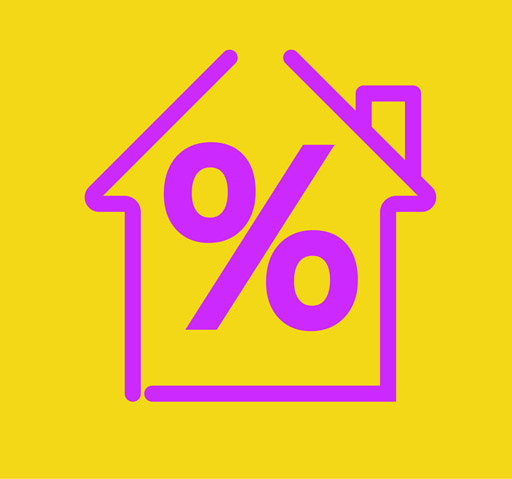1.2 Repayment or interest-only
The first major choice to be made about a mortgage is how to repay it. The options are a ‘repayment’ mortgage or an ‘interest-only’ mortgage. These days many lenders only offer the former, making the decision simple!
With a repayment mortgage, the capital or principal sum (the original amount of debt) is paid off in stages throughout the life of the loan. Look at Table 1 below to see the pattern of payments on a repayment mortgage. The typical structure is a reducing balance loan with a set amount paid each month throughout the mortgage term unless the interest rate changes.
| In year | Interest paid | Capital repaid | Total mortgage payment |
|---|---|---|---|
| 1 | 3957 | 2379 | 6336 |
| 5 | 3546 | 2790 | 6336 |
| 10 | 2930 | 3406 | 6336 |
| 15 | 2177 | 4159 | 6336 |
| 20 | 1412 | 4924 | 6336 |
| 25 | 142 | 6194 | 6336 |
As you can see from the table, initially the majority of annual mortgage repayments are made up of interest, as there’s such a large sum to pay interest on. Only a small proportion of your repayments go towards paying off the capital. When you get closer to the end of the mortgage term, your repayments are mainly going towards paying off the capital, as there’s then a much smaller loan, which accrues much less interest.
One consequence is that a borrower who wishes to repay early might be surprised at how much of the principal sum remains. Table 1 shows a £100,000 repayment mortgage payable over 25 years, at a mortgage rate of 4%. For this illustration it is assumed that the mortgage rate stays the same throughout the life of the mortgage.
With an interest-only mortgage, the principal sum outstanding is unchanged throughout the life of the loan and only interest payments are made to the lender until the end of the loan period. At the end of the period the borrower must have the means to repay the lender the principal sum (the amount outstanding).
With interest-only mortgages, repayment of the principal is typically achieved by putting money into a savings or an investment scheme (such as an ISA or unit trusts) throughout the life of the mortgage. To determine how much to save each month, the investment is projected to grow at an assumed rate in order to produce a lump sum large enough to repay the principal sum in full on the maturity of the mortgage.
Activity 2 Using investment schemes to repay a mortgage
What could go wrong with using an investment scheme to build up the funds to repay a mortgage?
Enter your comments in the box below and save to reveal the discussion.
Discussion
The risk is that the investment scheme builds up insufficient funds to repay the mortgage. In such cases the borrower has to find other funds to complete repayment or borrow money for a further term. This risk means that interest-only mortgages are unpopular these days and indeed many lenders do not offer them. Lenders that do need to be convinced that a credible and robust scheme is in place to pay off the mortgage at the end of its term.
Those on interest-only mortgages are strongly advised by the Financial Conduct Authority (FCA) to check whether their investment schemes are on track to repay their mortgage. Those with such schemes set up years ago when interest-only mortgages were more prevalent are, in any case, very likely to be contacted by their lender to ask how they intend to repay their mortgage at the end of the interest-only term!
As mentioned above, you may not have any choice but a repayment mortgage. However, the next choice about your mortgage product is one you will certainly have to make: do you want a fixed-rate mortgage or one with a variable rate?

